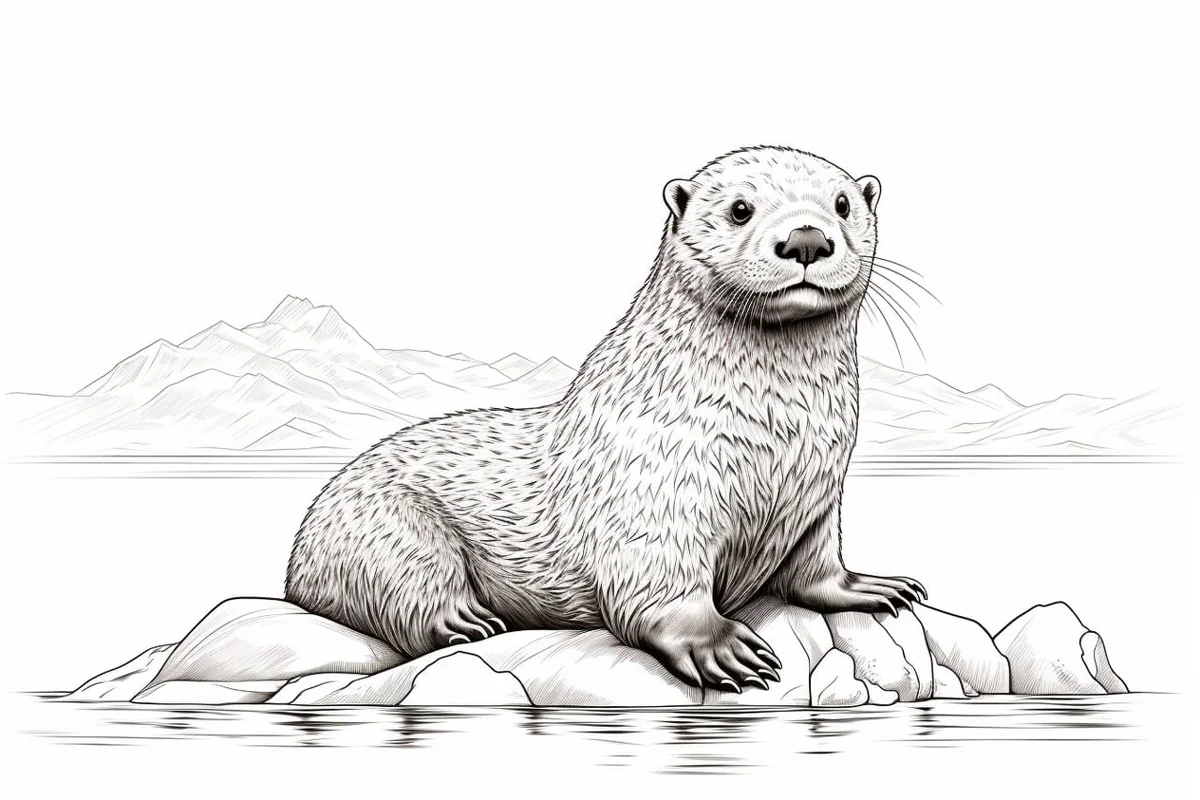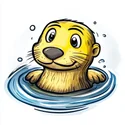How to Draw a Sea Otter in 11 Easy Steps
In this article, you will learn step-by-step techniques to capture the adorable features of a sea otter through drawing. From mastering their whiskers to portra

Materials You'll Need
- Drawing paper
- Pencil (HB or 2B)
- Eraser
- Colored pencils
- Markers
- Blending stump

Welcome to the wonderful world of drawing sea otters! These adorable marine mammals are known for their playful nature and endearing appearance, making them a popular subject for artists of all skill levels. In this tutorial, we will explore the unique features of sea otters and learn how to capture their charm on paper. From their sleek fur to their expressive faces, we will break down the key elements that make sea otters so captivating to draw. So grab your pencils and paper, and let's dive into the art of how to draw a sea otter!



Materials Required
To draw a sea otter, you will need the following materials:
-
Pencils (preferably a range of graphite pencils for different shades)
-
Eraser (both kneaded and regular erasers)
-
Blending stumps or tortillons for shading and blending
-
Reference image of a sea otter for accuracy
-
Optional: Colored pencils or markers for adding color to your drawing
These basic materials should be sufficient for creating a detailed and realistic drawing of a sea otter.:
How to Draw a Sea Otter: a Step-by-step Guide
Step 1: Materials Needed
-
Paper
-
Pencil
-
Eraser
-
Fine-tip black marker or pen
-
Colored pencils or markers (optional)
Step 2: Reference Image
- Find a clear reference image of a sea otter to use as a guide for your drawing.
Step 3: Basic Shapes
- Start by lightly sketching the basic shapes that make up the sea otter's body: a large oval for the body, a smaller circle for the head, and smaller ovals for the limbs.
Step 4: Features
- Add in the details of the sea otter's face, including the eyes, nose, and mouth. Sea otters have small, round eyes and a cute button nose.
Step 5: Fur Texture
- Use short, curved lines to add texture to the sea otter's fur. Sea otters have thick, fluffy fur that helps keep them warm in the cold ocean waters.
Step 6: Limbs and Paws
- Sketch in the details of the sea otter's limbs, making sure to add in the paws with their distinct webbed toes. Sea otters are excellent swimmers, and their webbed feet help them navigate the water with ease.
Step 7: Tail
- Draw the sea otter's tail, which is long and tapered. Sea otters use their tails to help them swim and steer through the water.
Step 8: Finalize the Outline
- Go over your sketch with a fine-tip black marker or pen to outline and define the sea otter's features. You can also erase any unnecessary pencil lines at this stage.
Step 9: Color (Optional)
- If you'd like, you can now add color to your sea otter drawing using colored pencils or markers. Sea otters are typically brown in color, but you can get creative with your color choices.
Step 10: Finishing Touches
- Add any final details or shading to complete your sea otter drawing. Take your time to refine the drawing and make any necessary adjustments to achieve the desired look.
Step 11: Sign and Date
- Sign your artwork and date it to mark its completion. Congratulations on successfully drawing a sea otter!
Finishing Splash: Your Sea Otter Masterpiece
Congratulations on completing your sea otter drawing! Your attention to detail, thoughtful shading, and creative interpretation have brought this playful marine creature to life on paper. Every line and texture tells a story of the otter's charm, and your artistic effort shines through.
Remember, art is a journey that grows with practice, patience, and curiosity. Keep exploring new techniques, experimenting with different styles, and letting your creativity flow like the ocean's waves. Your talent is evident, and with each new drawing, your skills will only deepen.
Well done on capturing the spirit of the sea otter! Keep creating, keep improving, and most importantly, keep having fun with your art. You've made a splash—now see where your artistic adventure takes you next! ✨
Reference Photos of Sea Otters



Fun Facts About Sea Otters
-
Sea otters are the only marine mammals that use tools. They are known to use rocks to break open shells of prey, such as clams and mussels, that are too hard to open with their teeth.
-
Sea otters have the densest fur of any animal, with up to 1 million hairs per square inch to help keep them warm in cold ocean waters.
-
They have a unique way of floating on their backs while resting or eating, using their chest as a table to hold their food.
-
Sea otters are very social animals and often hold hands while floating in groups to prevent drifting apart. This behavior is known as "rafting."
-
They have a specialized system that allows them to close their nostrils and ears while underwater, enabling them to dive and forage for food without getting water in their orifices.
-
Sea otters are known for their playful behavior, such as sliding down muddy slopes or playing with objects like kelp or shells.
-
They are important keystone species in their ecosystems, as they help maintain the health of kelp forests by preying on sea urchins, which can overgraze and destroy kelp beds if left unchecked.
-
Sea otters have a high metabolic rate and must eat up to a quarter of their body weight in food each day to fuel their energetic lifestyle.
-
They have a unique way of grooming their fur by blowing air into it and fluffing it up to maintain its insulating properties.
-
Sea otters are a threatened species due to historical fur trade hunting, habitat loss, pollution, and entanglement in fishing gear. Conservation efforts are in place to protect and restore their populations.
Tip: When drawing sea otters, it's essential to focus on their unique facial features and body proportions to capture their charm accurately. Start by sketching a basic oval for the head and a slightly larger oval for the body, ensuring that the head is proportionately smaller for that adorable look. Use a softer pencil, like a 2B, for initial sketches to make adjustments easier, and don't hesitate to lightly outline the playful expressions by emphasizing their round eyes and small, rounded snouts.
Pay close attention to the texture of their fur; short, quick strokes can create the illusion of softness, while varying the pressure on your pencil can help differentiate between the lighter and darker areas of their coat. Lastly, don't forget to include their playful paws—drawing them in dynamic positions, like holding a rock or floating on their backs, adds personality to your artwork!
Suggestions for Scenes and Settings for Sea Otter Drawings
Certainly! Here are some specific suggestions for scenes and settings to draw Sea Otters:
-
Sea Otter lounging on a kelp bed in a tranquil underwater kelp forest.
-
A mother Sea Otter floating on her back, cradling her adorable pup in the calm waters of a bay.
-
Sea Otters playfully sliding down a rocky shoreline into the crashing waves of the ocean.
-
A group of Sea Otters grooming each other on a rocky outcrop at sunset, with the golden light reflecting off the water.
-
Sea Otters diving for sea urchins among vibrant coral reefs in a marine sanctuary.
-
A pair of Sea Otters holding hands while floating in a calm cove, showcasing their social behavior.
-
Sea Otters interacting with other marine animals like dolphins or seals in a bustling harbor.
-
A lone Sea Otter cracking open a shell with a rock while floating on its back in a serene estuary.
-
Sea Otters basking in the sun on a sandy beach, with seagulls flying overhead and waves rolling in.
-
A Sea Otter peeking out from behind a cluster of colorful sea anemones in a tide pool, surrounded by diverse marine life.
These scenes and settings can provide a variety of opportunities to capture the playful, social, and adorable nature of Sea Otters in your drawings.